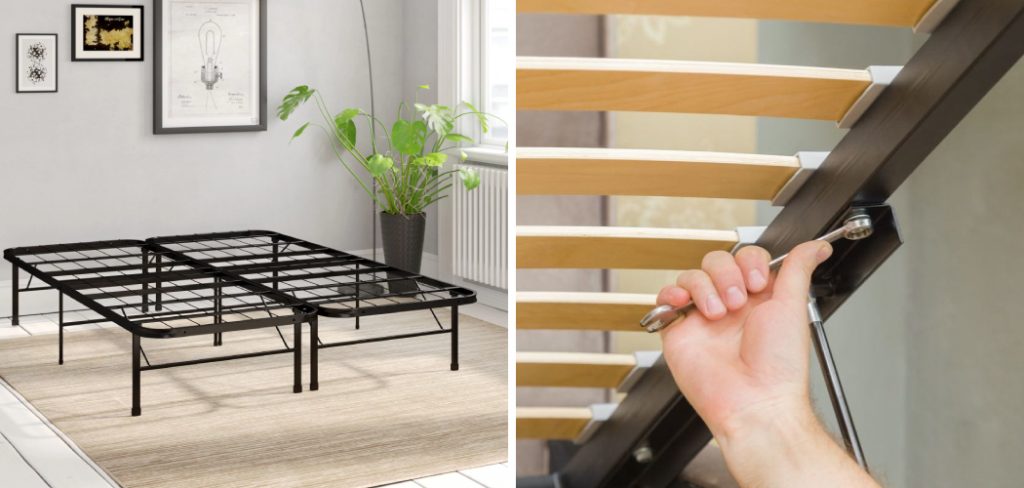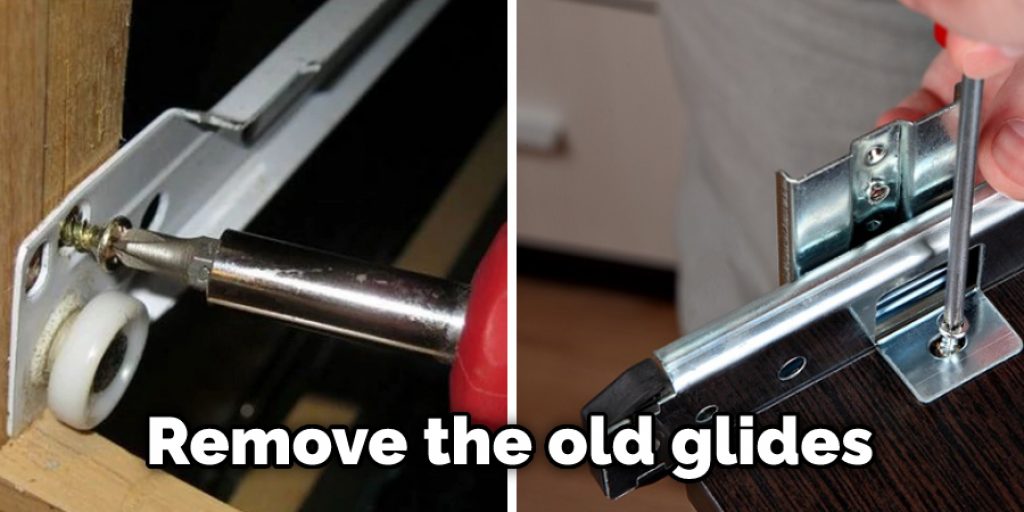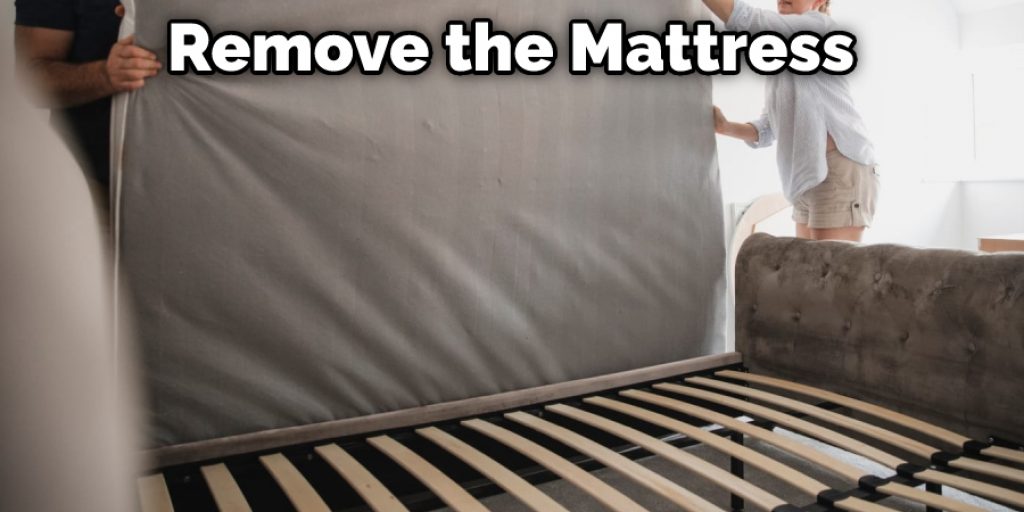Is your metal bed frame sagging in the middle? This can be a real pain, especially if you have children or pets who like to jump on the bed. Luckily, there are a few ways to fix this issue. In this blog post, we will discuss a few methods for how to fix a sagging metal bed frame.

To fix a sagging metal bed frame, you will need to first take the following steps: remove the screws that hold the bed frame together; next, use wood glue to reattach the slats; finally, replace the screws tighten them in place. By following these simple steps, you can restore your bed frame to its original shape and stability. Read on for more information!
Summary: Fixing a sagging metal bed frame is relatively simple and can usually be done with just a few tools. First, you need to locate the adjustable feet or brackets on the frame and adjust them to level the frame.
If that doesn’t work, you may need to replace the center support bar or tighten any loose screws on the frame. Finally, if you have an older metal bed frame, adding an additional piece of wood between the box spring and mattress can provide extra support and reduce sagging.
10 Reasons That Causes Sagging Metal Bed Frame
1. Mattress is Getting Old:
A mattress will start to sag in the middle over time because of the person’s weight combined with gravity. You can try using a mattress topper or mattress pad to fix this problem.
2. Bed Frame is Worn Out:
If your bed frame is made of metal, it can wear out over time. This is especially true if you frequently move your bed or if it’s been in storage for a while. A good way to tell if your bed frame is worn out is to check for rust spots or missing paint. If you see either of these, it’s time to replace your bed frame.
3. Broken Springs:
If your bed frame has springs, they can break over time. This will cause your bed to sag. You can purchase replacement springs at most hardware stores. Simply remove the old springs and replace them with the new ones.
4. Worn Glides:
The glides on a bed frame help to keep it level and prevent it from wobbling. Over time, these glides can become worn down and no longer provide adequate support. You can purchase replacement glides at most hardware stores. Remove the old glides and replace them with the new ones.

5. Loose Bolts:
If your bed frame has bolts, they can loosen over time. This will cause your bed to sag. You can purchase replacement bolts at most hardware stores. Simply remove the old bolts and replace them with the new ones.
6. Damaged Wood:
Check for any cracks, holes, or other damage to the wood. Use a drill to make a pilot hole slightly smaller than the screw diameter if you find any. Next, insert a screw into the pilot hole and tighten it until it is snug. Repeat this process for each damaged area.
7. Sagging Box Spring:
If your bed has a box spring, it can sag over time. This is due to the person’s weight sleeping on the bed combined with gravity. You can purchase a new box spring or support the existing one with a board to fix this problem. If your mattress is sagging, you can purchase a new box spring or support the existing one with a board to fix this problem.
8. Lose Tension Over Time:
The tension on a bed frame can loosen over time. This will cause your bed to sag. You can purchase replacement tensioners at most hardware stores. Simply remove the old tensioners and replace them with the new ones.
9. Weight of the Bed:
If your bed is too heavy for the frame, it can cause the frame to sag. To fix this problem, you can try removing some of the weight from the bed. This may mean removing some of the mattress, box spring, or both. You can also try redistributing the weight evenly across the bed.

10. Improper Assembly:
If your bed was not assembled properly, it could cause the frame to sag. You can try disassembling the bed and reassembling it to fix this problem. If you are not sure how to do this, you can ask for help from a friend or family member who is handy with tools.
12 Effective Steps on How to Fix a Sagging Metal Bed Frame
Step 1: Gather Necessary Materials and Tools
To fix a sagging metal bed frame, you will need the following materials and tools:
- Adjustable wrench or socket set
- Level
- Tape measure
- Wood shims or metal washers
- Replacement bolts, nuts, and washers (if necessary)
- Metal support bar or angle iron (if necessary)
- Metal brackets (if necessary)
- Drill and drill bits (if necessary)
- Metal saw (if necessary)
- Metal file (if necessary)
- Safety goggles and gloves
Step 2: Assess the Extent of Sagging
Inspect the metal bed frame to determine the extent of the sagging and identify the cause. Look for any bent or damaged components, loose bolts or connections, or worn-out support structures.
Step 3: Tighten All Bolts and Connections
Using an adjustable wrench or socket set, tighten all bolts and connections on the metal bed frame. This may help to stabilize the frame and alleviate some of the sagging. Be careful not to overtighten the bolts, as this can damage the frame or strip the threads.
Step 4: Check the Frame for Level
Place a level on the metal bed frame to determine if it is level. If the frame is not level, this may be contributing to the sagging issue.
Step 5: Level the Frame Using Shims or Washers
If the frame is not level, use wood shims or metal washers to level the frame. Place the shims or washers under the low points of the frame to raise them to the same level as the rest of the frame. This can help to distribute the weight more evenly and reduce sagging.
Step 6: Inspect Support Structures
Examine the support structures of the metal bed frame, such as slats or crossbars. If these components are bent, damaged, or inadequate to support the weight of the mattress and occupants, they may be contributing to the sagging issue.
Step 7: Replace or Reinforce Support Structures
If the support structures are not providing adequate support, consider replacing or reinforcing them. This may involve adding a metal support bar or angle iron to the frame, or replacing the existing slats or crossbars with stronger, more durable materials. Ensure that any added support structures are securely attached to the frame using appropriate brackets, bolts, and nuts.
Step 8: Secure Loose Slats or Crossbars
If the support structures are loose or not securely attached to the frame, this can contribute to sagging. Tighten any loose bolts or connections, and consider adding metal brackets to secure the slats or crossbars more firmly to the frame.
Step 9: Measure and Cut Additional Support (If Necessary)
If you are adding a metal support bar or angle iron to the frame, measure the length of the frame and cut the support to the appropriate size using a metal saw. Be sure to wear safety goggles and gloves during this process. File down any sharp edges on the cut support using a metal file.
Step 10: Attach Additional Support (If Necessary)
Securely attach the additional support to the metal bed frame using appropriate brackets, bolts, and nuts. If necessary, drill holes in the frame to accommodate the bolts. Ensure that the added support is level and firmly secured to the frame.
Step 11: Reassemble the Bed
Once all repairs and reinforcements have been made, reassemble the bed and place the mattress back onto the frame. Check the frame for level and stability once again to ensure that the sagging issue has been resolved.
Step 12: Regular Maintenance and Inspection
To prevent future sagging issues, regularly inspect and maintain your metal bed frame. Tighten bolts and connections as needed, and ensure that support structures remain in good condition and adequately support the weight of the mattress and occupants. By performing regular maintenance and addressing any issues promptly, you can help to extend the life of your metal bed frame and maintain its stability and comfort.
By following these steps, you can effectively fix a sagging metal bed frame, restoring its stability and comfort. Patience and attention to detail are key to achieving a successful repair, as rushing through the process or using improper techniques can lead to further damage or an unsatisfactory result. With the proper tools, materials, and techniques, you can maintain the integrity of your metal bed frame and enjoy a comfortable, supportive sleep surface for years to come.
Remember that safety should always be a priority when working with metal and power tools. Always wear safety goggles and gloves to protect yourself from injury, and follow the manufacturer’s guidelines for the proper use and maintenance of any tools or equipment.
In addition, it is important to consider the age and overall condition of your metal bed frame when assessing the feasibility of repairs. In some cases, it may be more cost-effective and practical to replace the frame entirely, rather than investing time and resources into repairing a frame that is nearing the end of its useful life. By carefully evaluating your options and making informed decisions, you can ensure that you are taking the best course of action to maintain a comfortable, supportive sleep environment for you and your family.
Some Helpful Tips and Suggestions
Here we have given tips on how to fix a sagging metal bed frame.
- Check all the nuts and bolts to ensure they are tightened.
- Use a level to ensure the bed frame is level from side to side and front to back.
- Try using a board or piece of plywood under the mattress for added support.
- If the bed frame has legs, try adding an extra support leg in the middle of the frame.
- If the bed frame is still sagging, try replacing the center support rail with a stronger one.
- If all else fails, you may need to replace the entire bed frame.
- Always make sure to follow the manufacturer’s instructions when assembling or disassembling a bed frame.
- Be careful when tightening nuts and bolts, as over-tightening can damage the bed frame.
How to Prevent the Metal Bed Frame from Becoming Saggy?
The best way to prevent your metal bed frame from becoming saggy is to check it for wear and tear signs regularly. If you notice any sagging, immediately adjust the frame to level it again. You can also try using a mattress topper or memory foam mattress to help distribute weight more evenly and prevent sagging.

Additionally, make sure to use a supportive bed frame and avoid putting too much weight on one side of the frame. By following these tips, you can help keep your metal bed frame in good condition for years to come.
You Can Check It Out To Fix Green Screen on Roku Tv
Frequently Asked Questions
Why Does My Bed Creak When I Move?
Bed frames are often made from thin, weak materials that can sometimes buckle or give when you move around in bed. This is because the frame was not designed to handle regular stresses and strains associated with sleeping (such as weight changes, gravitational pull, and breathing). As a result, it may be time to consider a new bed frame or upgrade your current one.
If budget is an issue for you, then there are many cheap yet adequate options available on the market. You could also try using foam mattresses instead of beds to reduce noise and vibration caused by movement. And lastly, make sure to adjust your sheets regularly so that they support your mattress properly and don’t create any gaps or tears in the fabric.
Is It Safe to Sleep on a Broken Bed Frame?
It’s always important to do your research before making any major decisions, and that includes when it comes to safety. So, before you take the plunge and sleep on a broken bed frame, here are a few things you should know:
- It’s not just bed frames that can be dangerous – any piece of furniture that’s not stable can pose a risk. This includes dressers, nightstands, and other pieces of furniture in your bedroom.
- Bed frames that are too weak or too worn out can easily collapse, which could lead to serious injuries. This is especially true if you’re trying to sleep on the edge of the bed – the frame might not be strong enough to support your weight, and you could end up crashing into the bed below.
- Broken bed frames often have sharp edges or points that are prone to becoming lodged in your skin – this is particularly dangerous if you have a pacemaker or other medical devices that need close monitoring. If you’re sleeping on a broken bed frame, it’s important to keep these points in mind and avoid any areas where there are sharp edges or points.
- If you do end up sleeping on a broken bed frame, don’t hesitate to get help – there is a good chance you’ll suffer some sort of injury. You might even require surgery if the frame becomes lodged in your skin improperly. So, if you think there’s any chance of sleeping on a broken bed frame, it’s best to get it fixed as soon as possible!
Can a Metal Bed Frame Collapse?
There are a few things to keep in mind if you’re concerned about your metal bed frame collapsing. First, make sure that the construction of the frame is solid and well-made. Second, always check to see if there are any sharp edges or points on the bedframe that could cause it to break down. And finally, keep an eye out for signs of wear and tear such as rusted slots or screws poking through the metal. If you notice any of these things happening, don’t wait until it’s too late; call an experienced contractor right away!
Can You Put Wood Slats on a Metal Frame?
Yes, wood slats can be installed on a metal frame if they are properly secured. Make sure that the screws and nails used to secure the wood slats are of high quality, as this will ensure that the frame remains sturdy and does not buckle or bow under pressure. Additionally, make sure that all gaps between the metal bars are tightly covered with clips or other fasteners so that moisture does not accumulate and cause corrosion.
Conclusion
The bed frame is a very important part of the bed. It is the foundation that everything else rests on. A sagging metal bed frame can cause problems for the entire bed. There are several ways on how to fix a sagging metal bed frame.
One way is to use wooden boards to reinforce it. Another way is to screw the legs back in place. If these methods do not work, it may be time to replace the metal bed frame altogether. We hope this blog post has helped guide you in fixing your sagging metal bed frame! If you have any questions or want to know more, then feel free to comment below!
You May Also Read: How to Fix a Wooden Box Spring
You can check it out to Fix Bed Slats that Keep Falling
